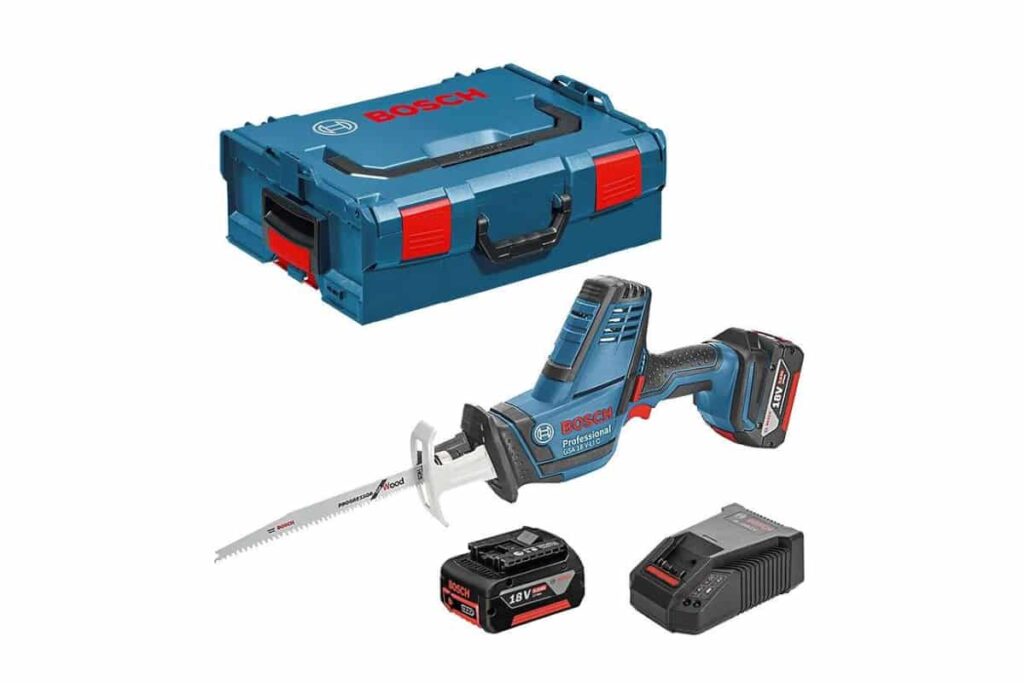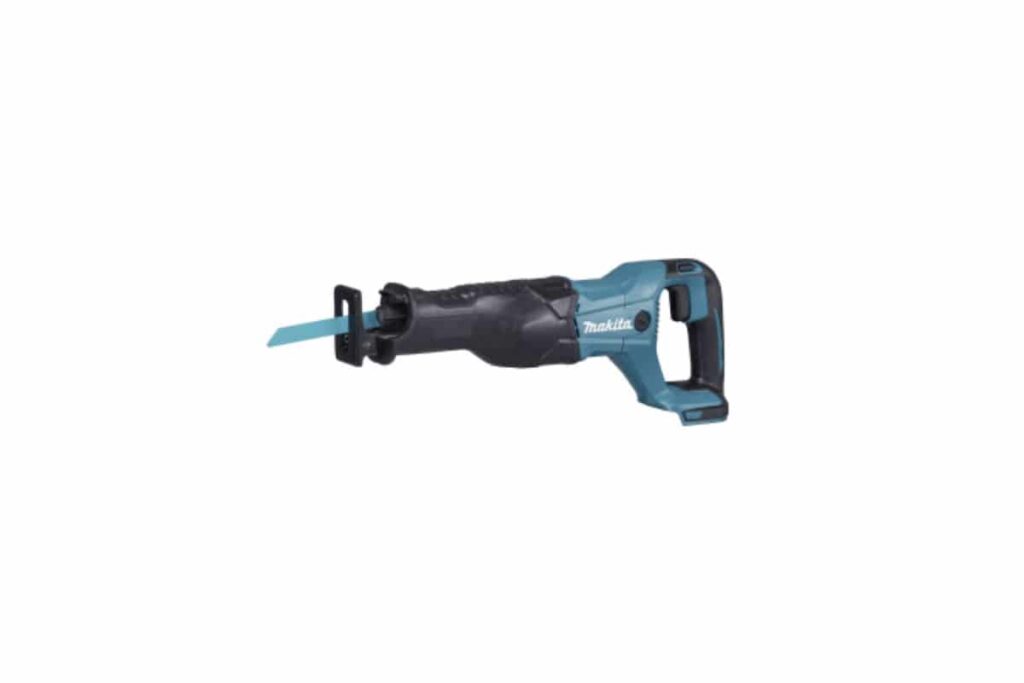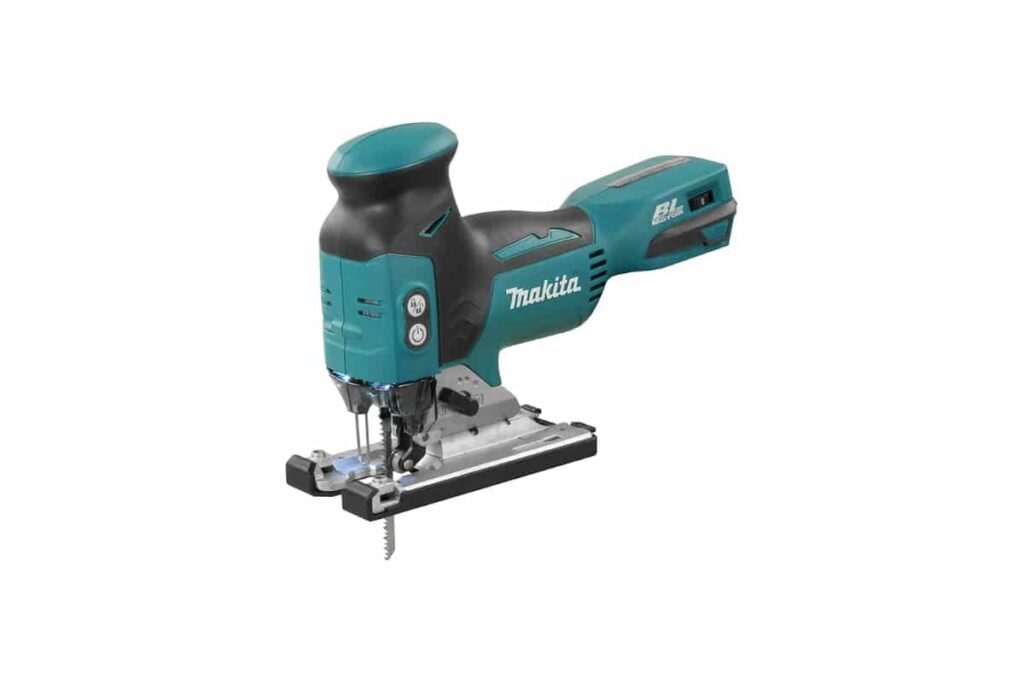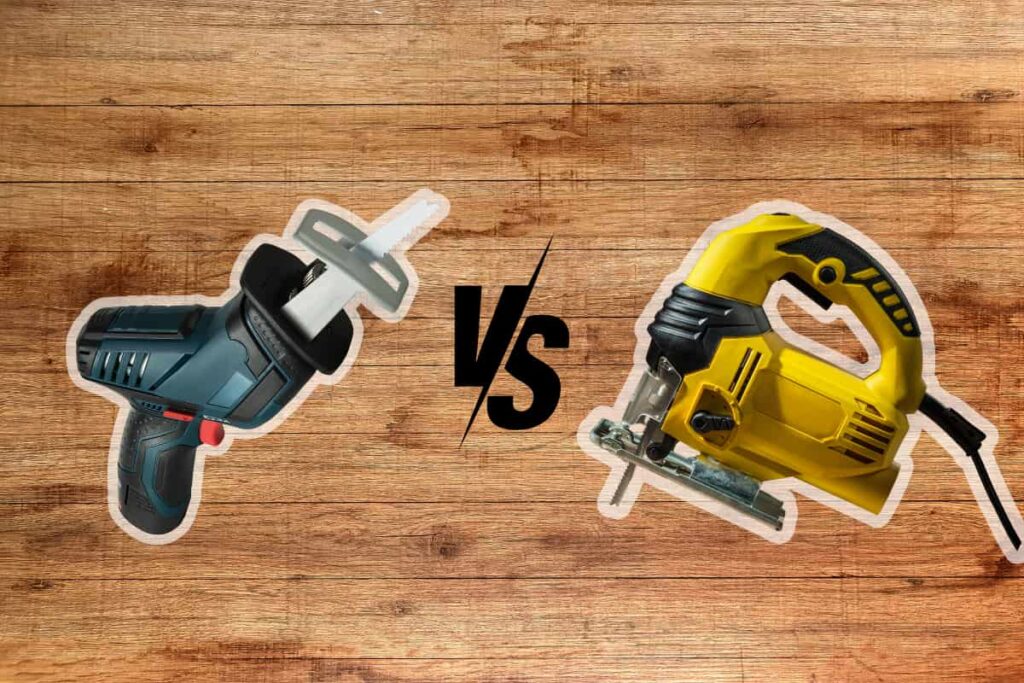Are you hesitating between a sabre saw and a jigsaw for your DIY projects? Each has its own specific advantages. The jigsaw is renowned for its versatility and high precision, while the sabre saw is perfect for larger cuts.
Whatever your task, whether it's cutting boards or working with wood, metal or plastic, this guide is here to help you choose the ideal tool. Find out which of these electric saws is right for you.
Understanding the differences between sabre saws and jigsaws
What exactly is a sabre saw?
The sabre saw is a powerful, multifunctional motorised cutting machine. It is also known as an electric handsaw. Its name derives from the configuration of its blade, which is reminiscent of a sabre. This blade, which is interchangeable and adjustable to suit the type of material to be cut, moves back and forth powered by a motor, usually electric. There are corded, battery-powered and pneumatic versions.
The sabre saw can be used on a variety of materials, including wood, steel and PVC, as well as sturdier construction materials such as brick and concrete, provided the appropriate blade is used. It offers great versatility, proving equally useful for carpentry, pruning, renovation and demolition work.
It is renowned for its ability to make coarse, arduous cuts without the need for great precision. Its robustness and long service life make it particularly suitable for long-term tasks.
What is a jigsaw?
The electric jigsaw features a narrow, serrated blade, connected to a motor that produces a rapid, repeated vertical movement. This feature enables it to make complex cuts in a range of materials, including wood, plastic and aluminium.
It is characterised by its ability to make curved, linear and meticulous cuts with great precision. Unlike the sabre saw, the jigsaw is especially prized for tasks requiring extreme precision and refined finishing work.
There are various types: electric, cordless or compressed air. Each of these models offers different levels of performance, depending on your requirements.
It's ideal for small DIY projects around the home, for slicing wood or plastic panels, and for any job requiring clean, precise cuts.
Why opt for a sabre saw rather than a jigsaw and vice versa?
When it comes to choosing between a sabre saw and a jigsaw, there are a number of factors to consider:
- The nature of the task : When it comes to cutting tough materials or making rough cuts, the sabre saw is your best ally. It's also ideal for demolition and pruning projects. However, for more delicate cuts or curved lines, a jigsaw is more suitable.
- Place of work : Sabre saws are difficult to handle in tight spaces. A smaller jigsaw might be more suitable in these circumstances.
- Energy requirements : The sabre saw stands out for its impressive power and high performance when working with tough materials. Jigsaws, on the other hand, are less powerful, but excel in terms of precision.
The decision you make will be influenced by the nature of your project, your preferences in terms of ease of use, and the financial resources at your disposal.
Things to consider when deciding between a sabre saw and a jigsaw
Saws are distinguished by their ability to adapt to a multitude of situations.
The choice between a sabre saw and a jigsaw is largely determined by the level of versatility required. The jigsaw excels at making precise, meticulous cuts, making it perfect for working with soft materials such as wood, plastic or plaster. The sabre saw, on the other hand, is more robust, specially designed to tackle hard materials such as metal, making it ideal for more demanding cuts.
One of the key elements is the choice of blade. A sabre saw can be used to cut a variety of materials, such as wood and metal, thanks to its interchangeable blades that are specific to each type of material. Similarly, a jigsaw is compatible with a wide range of blades, each designed for different materials, degrees of precision, speeds and bends.
- Jigsaws are often seen as more flexible tools for general use, thanks to their ability to make both curved and straight cuts, while also being usable on a variety of materials.
- Sabre saws, meanwhile, are valued for their exceptional power and ability to make deep cuts, making them particularly suitable for renovation and demolition projects.
Cutting efficiency for a jigsaw or sabre saw
The cutting efficiency of these two types of saw depends on the tool used and the nature of the material to be cut. Sabre saws have a more moderate cutting speedbut is proving particularly high performance for hard materials such as metal. It is often preferred for complex cuts or demolition work.
The jigsaw, on the other hand, offers a significantly higher cutting speedideal for flexible, lightweight materials such as wood, plastic and plaster. It excels in clean, precise cutsIt is recommended for work requiring a high degree of precision. In terms of method, the sabre saw is designed to cut forwards, while the jigsaw can operate in a non-linear movement, giving it greater precision for certain specific tasks.
Practicality and safety: factors to consider when choosing a saw
When it comes to practicality, sabre saws and jigsaws each have their own strengths. Thanks to its main handle and front handle, the sabre saw allows you to handle the tool with precision, which is very useful for large jobs. What's more, it can be used in almost any position, making it perfect for hard-to-reach spaces.
Jigsaws are characterised by their small size, making them particularly practical for work in confined areas. Some models feature a soleplate that can be adjusted to a 45° angle, ideal for making oblique and curved cuts. What's more, most jigsaws have an electronic speed regulator, so you can maintain a constant speed to suit the type of material being cut.
To ensure safety, you must always wear appropriate protective equipment, such as gloves and goggles, when using these tools. What's more, you need to select the right blade for your saw and the material you're handling, to prevent any damage to the tool.
For these two instruments, we recommend :
- Always hold the saw with both hands.
- Never force the saw
- Use blades appropriate to the saw and the type of material to be cut.
- Use suitable protective equipment, such as gloves and safety goggles.
Sabre saws and jigsaws: which brands perform best?
Bosch equipment
Bosch is renowned for the premium quality of its appliances. These machines stand out for their remarkable cutting efficiency and ergonomic design, ensuring comfortable use.
- Bosch sabre saws are renowned for their robustness and ability to work with a variety of materials. The Bosch Professional GSA 18V-LI C model stands out in particular for its superior ergonomics and cutting speed.

- Bosch jigsaws are distinguished by their accuracy and ease of use. The GST 160 BCE Professional saw from Bosch is renowned for its sturdiness and remarkable 800 watts of power, while guaranteeing ease of use. Bosch's patented blade guide mechanism ensures precise cuts.

Makita products
Makita has an excellent reputation for high-quality sabre and jig saws. Designed for professionals, these saws offer great value for money. Solid, reliable and efficient, they make clean, precise cuts.
Makita saws, such as the DJR186, are renowned for their cutting performance and versatility with a range of materials. They offer exceptional power, perfect for tough jobs.

Makita jigsaws are characterised by ease of use and high precision. The DJV181 model features a brushless motor and a triple-adjustable pendulum movement, offering up to six adjustable speed levels for the most comfortable operation.

How do I use a sabre saw or jigsaw?
When handling a sabre saw or jigsaw, the choice of blade is the first priority. With a sabre saw, a wide, robust blade is perfect for tough materials such as metal or concrete. For jigsaws, on the other hand, a thin, narrow blade is better suited to soft materials such as wood or plastic.
The steps for handling these saws are as follows:
- Install the blade: before proceeding, make sure the saw is switched off or the battery is removed.
- Draw the cutting line: use a pencil or marking instrument to draw the cutting line on the material.
- Attach the saw: install the saw at the end of the cutting path, positioning the blade directly above the material.
- Start cutting: switch on the saw and wait for it to reach maximum speed before starting to cut.
- Keep a precise trajectory: make sure you stabilise the saw and move slowly along the cutting line.
- Finish the cut: once the cut is complete, switch off the saw and wait until the blade comes to a complete stop before removing it from the material.
It is advisable to wear protective equipment, including safety goggles, gloves and appropriate footwear, when using the machine. To maintain a clean working environment, it is advisable to use a dust extraction device or fan to remove particles.




